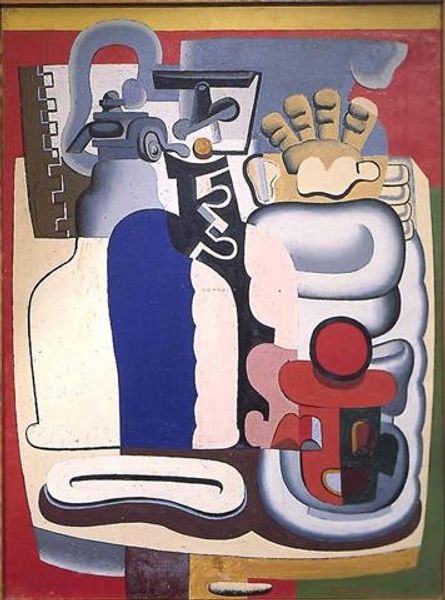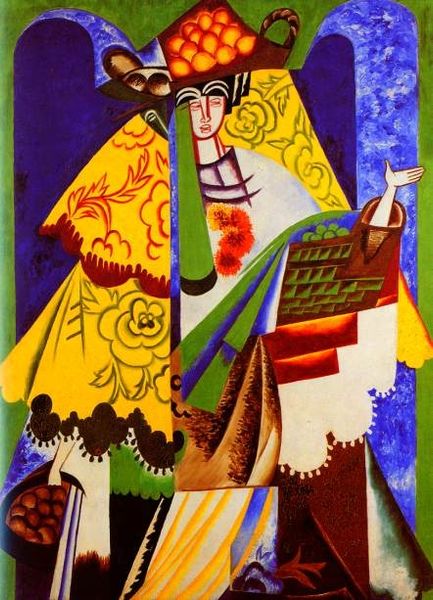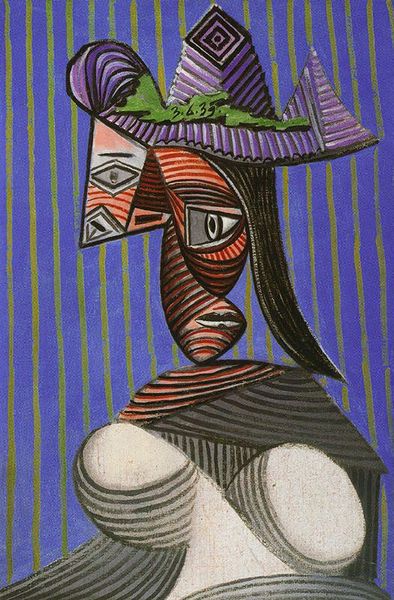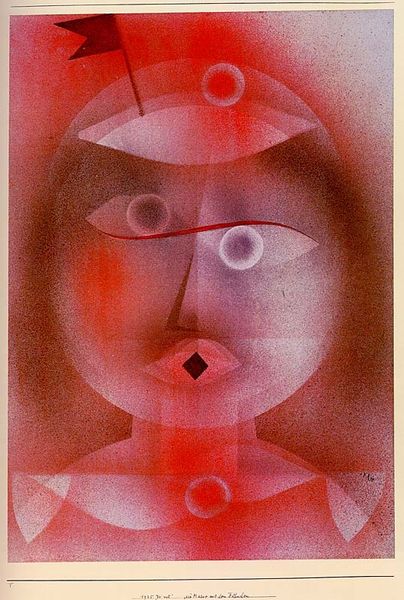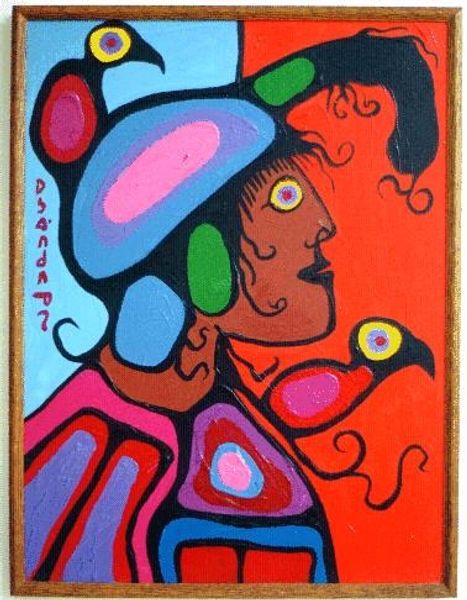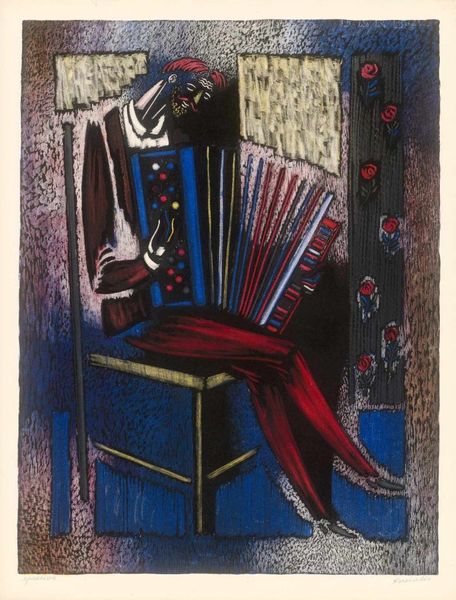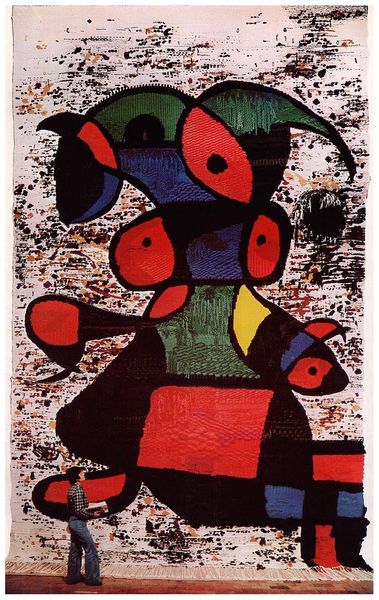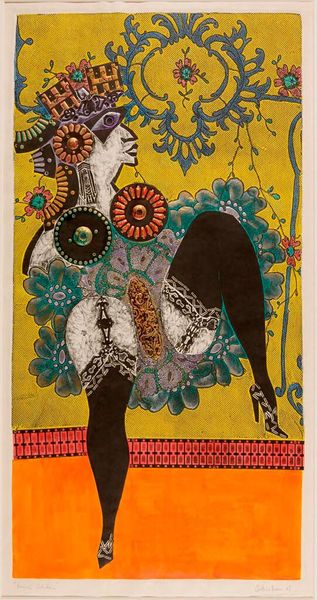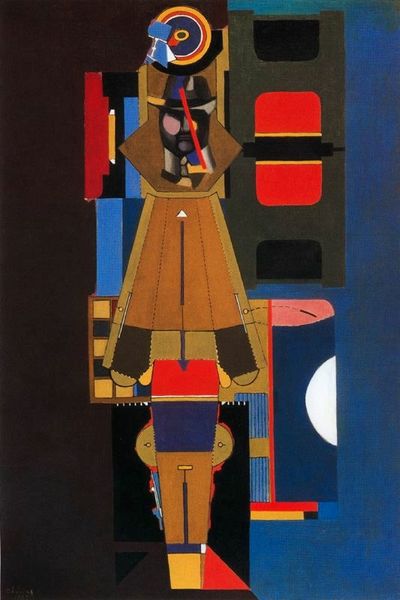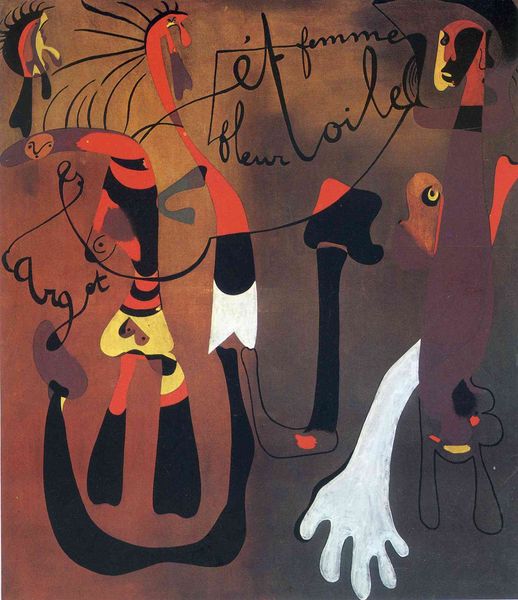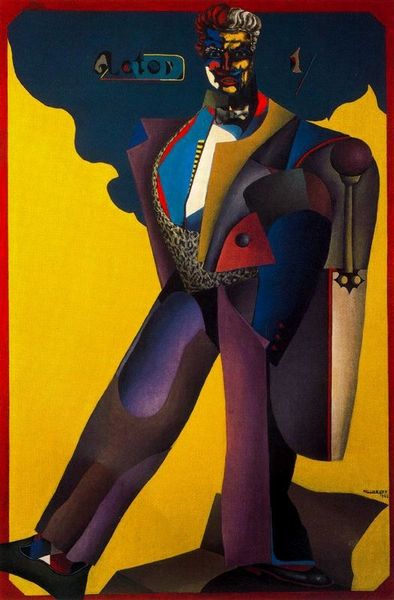
Copyright: Public domain
Editor: Here we have Yamamura Toyonari's "Actor in Chinese Play," created around 1924. It’s a beautiful woodblock print and strikes me as very dramatic and stylized. What do you see when you look at this work? Curator: Well, first I notice the materiality of the woodblock itself. The flat planes of color, the visible registration marks… it speaks to a whole system of labor. This wasn’t just Toyonari's vision, but the result of artisans painstakingly carving and printing each color layer. What does that repetitive process tell us about art production during this time? Editor: So you're less focused on the actor depicted and more on the… the printmaking itself? Curator: Exactly! Consider the cultural context. This is post-WWI Japan, a period of rapid modernization and industrial growth. Does this meticulously crafted woodblock print represent a nostalgic yearning for pre-industrial modes of production in the face of increasing mechanization? Or perhaps, a canny understanding of the market and a conscious engagement with commodity culture? Editor: I hadn't thought of it that way. The print seemed like a straightforward depiction, but you’re highlighting how it also acts as a cultural artifact, influenced by labor practices and larger social shifts. It encourages thinking beyond the immediate image. Curator: Precisely. We tend to celebrate the "artist," but the material reality forces us to consider everyone involved in the process of its creation and consumption. It complicates our understanding of artistic genius, don't you think? Editor: Definitely. Now I’m thinking about who was buying these prints, and what they represented to them... Thanks, I’m walking away seeing this in a different light now.
Comments
No comments
Be the first to comment and join the conversation on the ultimate creative platform.
